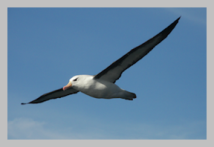This post was originally an article written for the online Newsletter of theWeather Club of the Royal Meteorological Society and is reproduced here with their permission)
I spend a lot of time reading scientific papers. They are one of the main ways in which science is communicated within the academic discipline, and also one of the ways in which academics productivity is measured. Away from work therefore, I generally find it hard to summon enthusiasm for reading anything vaguely science related. However, for Christmas this year I asked for 3 of the books on the shortlist for the Royal Society’s Winton Prize for Science Books prize. I looked forward to reading these initially because of my interest in science writing, but somewhat to my surprise I quickly found myself intrigued by the science within the first one.
“Bird Sense” by Tim Birkhead discusses the evidence that birds use each of seven senses; seeing, hearing, touch, taste, smell, magnetic sense, and emotion. It is hard to say why such a topic captured my imagination but its considerable distance from my own research area certainly contributed. Imagine my surprise then to find the familiar topic of dimethyl sulphide (DMS) and even a familiar name within such a book.
DMS is a gas that is most well known as a component of the smell produced when cooking cabbage or beetroot. It is also produced at sea when phytoplankton are eaten by zooplankton (e.g. krill), the gas being first dissolved in seawater and then released to the atmosphere. Once oxidised in the marine atmosphere it is a major natural source of sulphate aerosol in the marine atmosphere and may go on to affect clouds and have a significant impact on the Earth’s climate (therein lies the link to my research area). Oceanic DMS emissions account for something like 15% of the global sulphur emissions to the atmosphere and are a significant fraction of the sulphur emissions particularly in the southern hemisphere mid-latitudes. These emissions are a major player in the supposed CLAW feedback loop between atmosphere and ocean whereby climate change leads to changes in DMS emissions which then alter climate themselves, although the magnitude and even the sign of this feedback is the subject of much debate.
Thus DMS is an important component of the marine atmosphere, but what does it have to do with bird senses? Seabirds in particular travel over very long distances to search for food, but many unerringly navigate safely back to their breeding grounds. Well, it could be that DMS is in fact providing a smell map by which seabirds can find their way home. Even more fascinating is the fact that this link was made via a chance encounter of biologist Gaby Nevitt with an atmospheric scientist, Tim Bates. Following an injury on a research cruise, Nevitt stayed on the ship whilst it was being prepared for a DMS transect cruise and saw the measurements of DMS across the ocean by Tim’s group. Subsequently, Nevitt and colleagues measured elevated heartbeats in birds exposed to air containing DMS and noted that the flight patterns of albatrosses were consistent with birds attempting to locate a breeding ground by smell, i.e. zigzagging across a plume rather than flying in a straight line (which would be more consistent with navigating by sight). So, far from escaping from work, I found aerosols deep in the depths of a book about bird behaviour, and a story of two science worlds colliding to produce a step change in understanding. I wonder what I will find in the other two books?
 Image and more information from the Nevitt Lab
Image and more information from the Nevitt Lab
Bird Sense What it’s like to be a bird by Tim Birkhead, Bloomsbury Press 2013
Bonadonna et al (2006) Journal of Experimental Biology, 209, 2165-9


